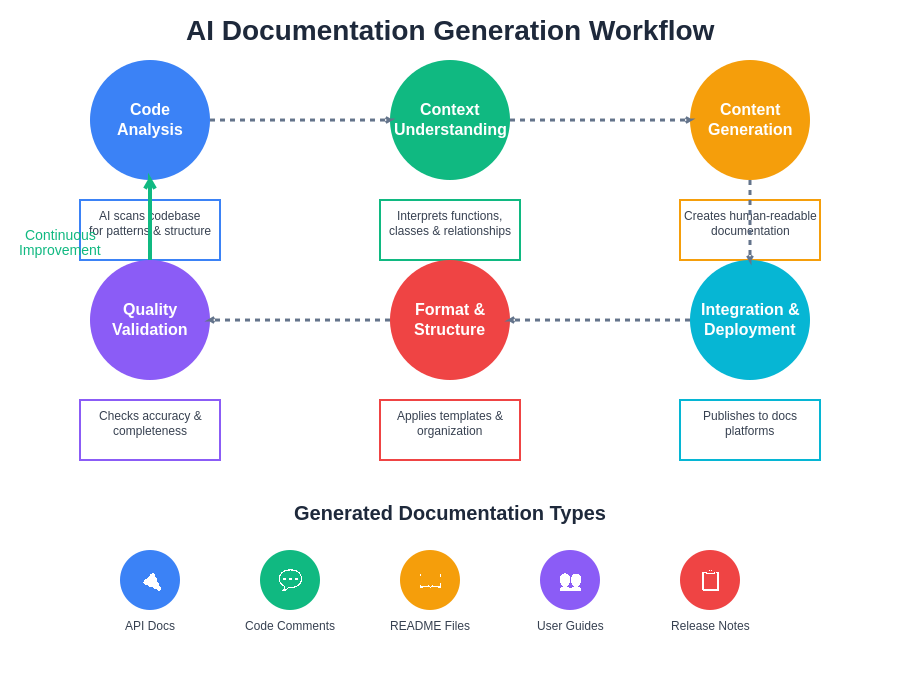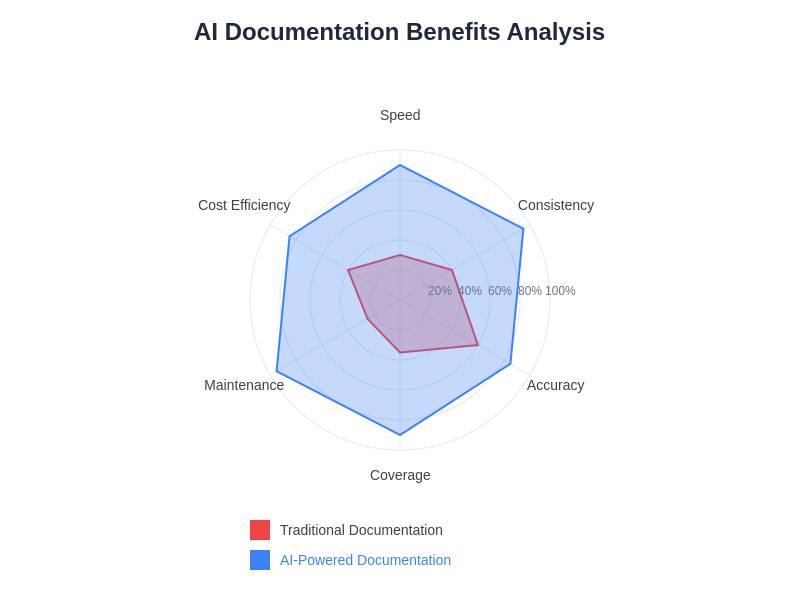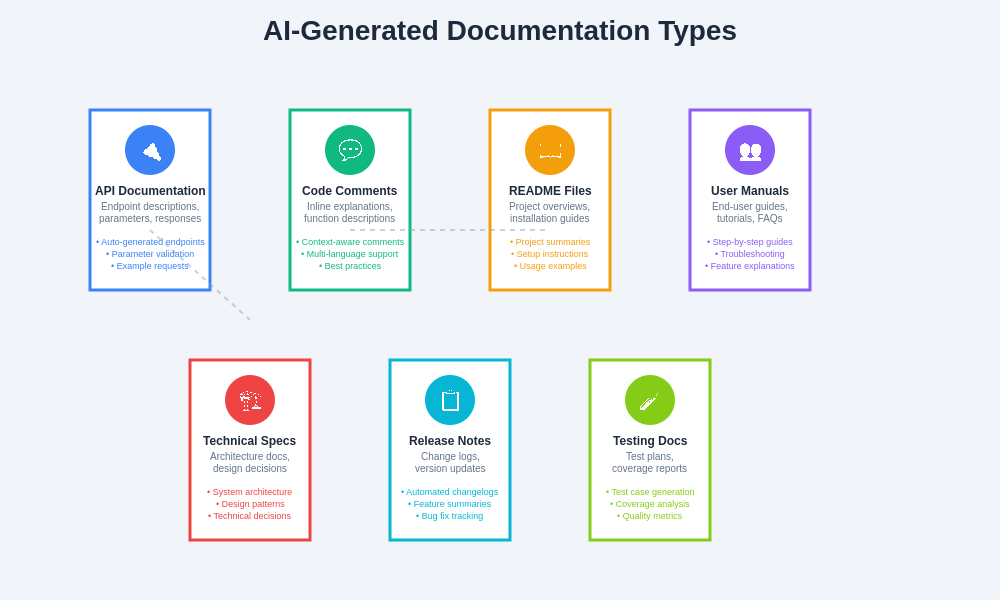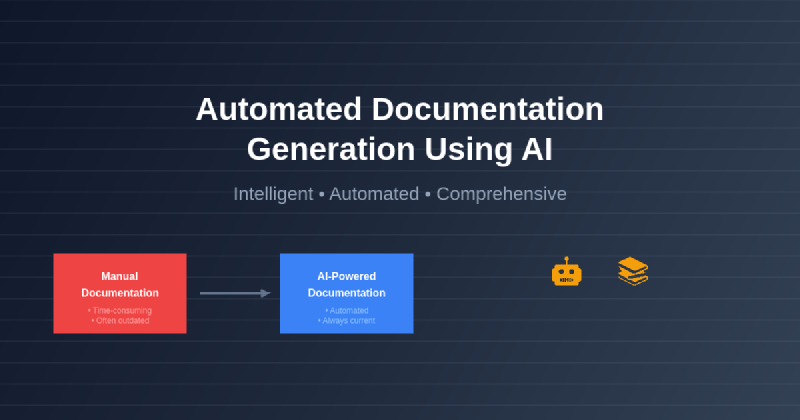Documentation has long been the Achilles’ heel of software development, often relegated to the bottom of priority lists despite its critical importance for project maintainability, team collaboration, and user adoption. The emergence of artificial intelligence-powered documentation generation tools has fundamentally transformed this landscape, offering developers and technical writers unprecedented capabilities to create comprehensive, accurate, and consistently updated documentation with minimal manual effort. This revolutionary approach to documentation creation represents a paradigm shift that addresses one of the most persistent challenges in the software development lifecycle while simultaneously improving the quality and accessibility of technical information.
The traditional approach to documentation creation has been fraught with challenges including time constraints, inconsistent quality, outdated information, and the inherent difficulty of maintaining comprehensive documentation alongside rapidly evolving codebases. Explore the latest AI trends in documentation to understand how machine learning technologies are reshaping the way we create and maintain technical documentation. Artificial intelligence has emerged as a powerful solution to these longstanding problems, offering automated systems that can analyze code, understand context, and generate human-readable documentation that accurately reflects the current state of software projects.
The Evolution of Documentation Practices
The journey from manual documentation creation to AI-powered automation represents a significant evolution in how development teams approach information management and knowledge sharing. Traditional documentation workflows typically involved developers manually writing comments, creating API specifications, and maintaining user guides as separate activities often disconnected from the actual development process. This fragmented approach frequently resulted in outdated documentation that failed to reflect the current state of the software, creating confusion for both developers and end users.
Modern AI-powered documentation systems have revolutionized this process by integrating documentation generation directly into the development workflow, analyzing code changes in real-time, and automatically updating relevant documentation to maintain accuracy and consistency. These intelligent systems can understand code structure, identify patterns, and generate comprehensive explanations that would traditionally require significant manual effort from experienced technical writers. The result is a documentation ecosystem that remains synchronized with the codebase and provides valuable insights for both technical and non-technical stakeholders.
Understanding AI-Powered Documentation Tools
The foundation of automated documentation generation lies in sophisticated natural language processing models that can analyze source code, understand programming patterns, and translate technical implementations into human-readable explanations. These AI systems leverage deep learning algorithms trained on vast repositories of code and documentation pairs, enabling them to understand context, identify important functions and methods, and generate appropriate explanations for different audiences and use cases.
Experience advanced AI capabilities with Claude for comprehensive documentation generation that understands complex codebases and creates detailed technical explanations. These tools go beyond simple template-based generation, offering intelligent analysis that can identify code relationships, understand architectural patterns, and generate documentation that provides genuine value to developers, project managers, and end users. The sophistication of modern AI documentation tools enables them to handle multiple programming languages, frameworks, and documentation formats while maintaining consistency and accuracy across diverse technical environments.
Automated Code Comment Generation
One of the most immediate applications of AI in documentation involves the automatic generation of inline code comments that explain function behavior, parameter requirements, and return values. Traditional code commenting often suffers from inconsistency, with some developers providing detailed explanations while others offer minimal or outdated information. AI-powered comment generation addresses this variability by analyzing code structure and generating comprehensive comments that follow established conventions and provide meaningful insights into code functionality.
These intelligent systems can identify complex algorithms, understand data flow patterns, and generate comments that explain not just what the code does, but why specific implementation decisions were made and how different components interact within the broader system architecture. The ability to automatically generate contextual comments significantly improves code readability and maintainability while reducing the burden on developers to manually document every function and method. This automated approach ensures that even complex legacy codebases can be enhanced with comprehensive documentation that facilitates understanding and modification by team members.

The comprehensive workflow of AI-powered documentation generation demonstrates the sophisticated process through which artificial intelligence transforms raw code into structured, human-readable documentation. This systematic approach ensures consistency, accuracy, and completeness across all generated documentation types while maintaining integration with existing development workflows and quality assurance processes.
API Documentation Automation
Application Programming Interface documentation represents one of the most critical yet challenging aspects of software documentation, requiring detailed explanations of endpoints, parameters, response formats, and usage examples. AI-powered API documentation tools can analyze code implementations, understand data structures, and automatically generate comprehensive API documentation that includes detailed descriptions, example requests and responses, and integration guidelines.
These sophisticated systems can identify RESTful patterns, understand GraphQL schemas, and generate documentation that accurately reflects the current state of API implementations while providing practical examples that demonstrate proper usage. The automation of API documentation creation significantly reduces the time required to maintain accurate technical specifications while ensuring that documentation remains synchronized with code changes. This approach is particularly valuable for teams working on microservices architectures or public APIs where comprehensive documentation is essential for adoption and integration success.
Intelligent README and User Guide Creation
Beyond technical documentation, AI systems have demonstrated remarkable capabilities in generating user-facing documentation including README files, installation guides, and comprehensive user manuals. These tools can analyze project structure, understand dependencies, and generate step-by-step instructions that guide users through installation, configuration, and basic usage scenarios. The ability to automatically generate user-friendly documentation addresses one of the most significant barriers to software adoption and reduces support overhead for development teams.
Modern AI documentation generators can understand different audience requirements and generate appropriate content for various user personas, from technical developers seeking integration guidance to end users requiring simple installation instructions. This multi-audience approach ensures that projects maintain comprehensive documentation that serves diverse stakeholder needs without requiring manual creation of multiple documentation versions. The intelligent analysis of project characteristics enables these systems to generate relevant examples, troubleshooting guides, and best practice recommendations that enhance the overall user experience.
Integration with Development Workflows
The most effective AI documentation systems seamlessly integrate with existing development workflows, automatically triggering documentation updates when code changes are committed, pull requests are merged, or new features are deployed. This integration ensures that documentation remains current and accurate without requiring additional manual effort from development teams. Modern CI/CD pipelines can incorporate AI documentation generation as automated steps that run alongside testing and deployment processes.
Discover comprehensive AI research capabilities with Perplexity for gathering information and context that enhances automated documentation generation with relevant external references and best practices. These integrated workflows can analyze commit messages, understand feature implementations, and generate release notes, change logs, and feature documentation that accurately reflects project evolution. The seamless integration of documentation generation into development processes ensures that information quality and completeness are maintained throughout the project lifecycle without creating additional overhead for development teams.
Multi-Language and Framework Support
Modern AI documentation tools demonstrate impressive capabilities across diverse programming languages, frameworks, and development environments. These systems can understand language-specific patterns, framework conventions, and domain-specific requirements to generate appropriate documentation for projects ranging from simple scripts to complex enterprise applications. The ability to handle multiple programming paradigms and architectural patterns makes AI documentation tools valuable for organizations working with diverse technology stacks.
The sophistication of multi-language support extends beyond simple syntax recognition to include understanding of language-specific best practices, common patterns, and community conventions that influence how documentation should be structured and presented. Whether working with object-oriented languages like Java and C#, functional programming languages like Haskell and Clojure, or modern web frameworks like React and Vue.js, AI documentation systems can generate contextually appropriate explanations that reflect the unique characteristics and conventions of each technology ecosystem.
Quality Assurance and Accuracy Validation
Automated documentation generation raises important questions about accuracy, completeness, and quality control that must be addressed through sophisticated validation mechanisms and human oversight. AI-powered documentation tools incorporate various quality assurance features including consistency checking, completeness validation, and accuracy verification that help ensure generated documentation meets professional standards and provides genuine value to users.
These validation systems can identify inconsistencies between code implementation and generated documentation, flag potentially outdated information, and suggest improvements based on established documentation best practices. The combination of automated generation and intelligent quality assurance creates a documentation ecosystem that maintains high standards while significantly reducing the manual effort required for creation and maintenance. Advanced AI systems can even learn from human feedback and corrections to improve future documentation generation quality and accuracy.
Customization and Brand Consistency
Enterprise organizations require documentation that reflects their brand guidelines, follows established style conventions, and maintains consistency across diverse projects and teams. AI documentation tools have evolved to support extensive customization options that enable organizations to maintain brand consistency while leveraging automated generation capabilities. These systems can be configured to follow specific style guides, incorporate company terminology, and generate documentation that aligns with organizational standards and expectations.
The ability to customize AI documentation generation extends to template selection, formatting preferences, and content structure that reflects organizational requirements and user expectations. Whether generating internal developer documentation or public-facing user guides, these systems can adapt their output to match established patterns and maintain the professional appearance that organizations require for their technical communications. This customization capability ensures that automated documentation generation enhances rather than compromises organizational branding and communication standards.

The comparative analysis of traditional versus AI-powered documentation generation reveals significant improvements across all critical performance metrics. Organizations implementing AI documentation tools experience substantial enhancements in speed, consistency, accuracy, coverage, maintenance efficiency, and cost effectiveness, demonstrating the transformative impact of artificial intelligence on documentation quality and development productivity.
Performance Metrics and Optimization
Measuring the effectiveness of automated documentation generation requires sophisticated metrics that evaluate both quantitative improvements and qualitative enhancements in documentation quality and user satisfaction. Organizations implementing AI documentation tools can track metrics including documentation coverage, update frequency, user engagement, and support ticket reduction to understand the impact of automated generation on overall project success and team productivity.
These performance metrics provide valuable insights into areas where automated documentation excels and situations where human oversight remains essential. The analysis of documentation usage patterns, user feedback, and maintenance requirements enables organizations to optimize their AI documentation workflows and achieve maximum value from automated generation investments. Continuous monitoring and refinement of documentation generation processes ensures that AI tools evolve to meet changing organizational needs and maintain high standards of quality and usefulness.
Integration with Knowledge Management Systems
Modern organizations require documentation that integrates seamlessly with existing knowledge management platforms, wikis, and collaborative documentation systems. AI-powered documentation tools have evolved to support various output formats and integration patterns that enable generated content to be automatically published to organizational knowledge bases, documentation websites, and collaborative platforms.
This integration capability extends beyond simple content generation to include metadata creation, cross-referencing, and relationship mapping that enhances the discoverability and usefulness of generated documentation within larger knowledge ecosystems. The ability to automatically categorize, tag, and link generated documentation ensures that AI-created content becomes a valuable component of organizational knowledge management rather than isolated information that fails to integrate with existing resources and workflows.
Security and Compliance Considerations
Organizations operating in regulated industries or handling sensitive information must ensure that AI documentation tools comply with security requirements and data protection regulations. Modern AI documentation systems incorporate various security features including on-premises deployment options, data encryption, and access controls that enable organizations to leverage automated generation capabilities while maintaining compliance with industry regulations and internal security policies.
The consideration of security and compliance extends to ensuring that generated documentation does not inadvertently expose sensitive information, proprietary algorithms, or confidential business logic that could compromise organizational security. Advanced AI documentation tools include filtering mechanisms and privacy protection features that enable organizations to benefit from automated generation while maintaining appropriate levels of information security and regulatory compliance.

The comprehensive ecosystem of AI-generated documentation encompasses multiple specialized types, each optimized for specific audiences and use cases. From technical API documentation to user-friendly guides, artificial intelligence can generate diverse documentation formats that serve the complete spectrum of stakeholder information needs while maintaining consistency and quality across all deliverables.
Future Trends and Technological Advancement
The continued evolution of AI documentation tools promises even more sophisticated capabilities including real-time collaboration features, advanced natural language understanding, and integration with emerging development tools and platforms. Future developments may include voice-activated documentation creation, visual diagram generation, and intelligent content optimization based on user behavior and feedback patterns.
The integration of AI documentation tools with emerging technologies such as augmented reality development environments, low-code platforms, and cloud-native architectures will create new opportunities for automated documentation generation that supports evolving development practices and emerging technology paradigms. These advancements will continue to reduce the barriers to comprehensive documentation creation while improving the quality and usefulness of technical information across diverse development contexts.
Economic Impact and Resource Optimization
The implementation of AI-powered documentation generation creates significant economic benefits for organizations through reduced manual effort, improved project velocity, and enhanced knowledge retention. The automation of documentation creation and maintenance processes enables development teams to focus on core value-creating activities while ensuring that critical project information remains accessible and current.
The economic impact extends beyond immediate cost savings to include improved project outcomes, reduced onboarding time for new team members, and enhanced software adoption rates that result from comprehensive and accessible documentation. Organizations investing in AI documentation tools typically experience return on investment through multiple channels including reduced support overhead, faster feature development cycles, and improved team productivity that compounds over time to create substantial competitive advantages.
Implementation Strategies and Best Practices
Successful implementation of AI documentation generation requires careful planning, stakeholder alignment, and gradual adoption strategies that allow organizations to realize benefits while managing change effectively. Best practices include starting with pilot projects, establishing quality standards, and creating feedback mechanisms that enable continuous improvement of automated documentation processes.
The development of organizational standards for AI-generated documentation, including review processes, approval workflows, and quality metrics, ensures that automated tools enhance rather than compromise documentation quality and usefulness. Training programs that help team members understand AI documentation capabilities and limitations create the foundation for successful adoption and maximum value realization from automated generation investments.
Conclusion and Strategic Considerations
Automated documentation generation using artificial intelligence represents a transformative opportunity for organizations seeking to improve software development efficiency, enhance knowledge management, and create more accessible technical information. The sophisticated capabilities of modern AI documentation tools address longstanding challenges in technical communication while creating new possibilities for comprehensive, accurate, and consistently maintained project documentation.
The strategic implementation of AI documentation tools requires thoughtful consideration of organizational needs, technology requirements, and change management processes that ensure successful adoption and maximum value realization. Organizations that successfully integrate AI documentation generation into their development workflows position themselves to benefit from improved productivity, enhanced collaboration, and more effective knowledge sharing that supports both immediate project success and long-term organizational growth.
Disclaimer
This article is for informational purposes only and does not constitute professional advice. The views expressed are based on current understanding of AI technologies and their applications in documentation generation. Readers should conduct their own research and consider their specific requirements when implementing AI-powered documentation tools. The effectiveness of automated documentation generation may vary depending on specific use cases, project requirements, and organizational contexts.
